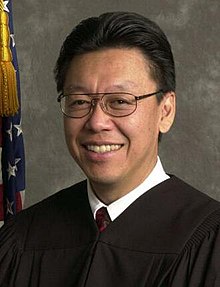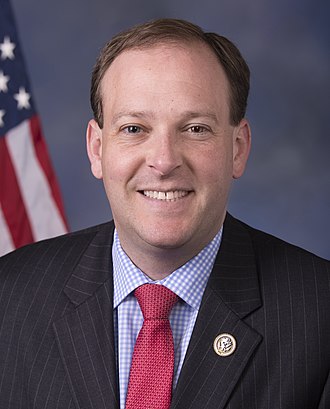It was on September 25th of 2025 that Judge Edward Chen ruled that water fluoridation poses an unreasonable risk to children’s brains. In what appeared to be the ultimate victory over fluoridation, the judge ordered the EPA to make a new rule to address the problem of fluoride injury. But on July 18, 2025, the EPA moved in exactly the opposite direction, filing an appeal that, if successful, will demolish the judge’s order rather than abiding by it. But will the Environmental Protection Agency (EPA) arguments made in appeal hold water or will they be tossed out by the court of appeals. The three-judge court of appeal will determine who the final winner is: a grass-root coalition wanting to end water fluoridation or the EPA, seeking to protect the status quo, which means to do nothing about the hazards of water fluoridation. Its appeal arguments are bold: it says that none of the plaintiffs had standing to sue, not even a pregnant woman in a fluoridated town in Kansas who, at first glance, seemed like the perfect plaintiff. And it argues that the trial court judge, Edward Chen, botched the conduct of the trial so seriously that the whole verdict should now be thrown out.
Time for Change or Business as Usual?
EPA’s legal arguments, formulated by the Solicitor General and his staff at the US Department of Justice (DOJ), come after a nine-year legal process in which activists and non-profits seek to do what previous presidents, Trump I and Biden, had made it do: perform a risk assessment on the hazards posed by water fluoridation and halt the unsavory practice of water fluoridation. The fact that the EPA, aided by the DOJ, is appealing a judge’s ruling suggests that the Trump II administration, still supports “business as usual.”
Of course, many Americans went to the polls last November hungry for reform and looking for a people’s victory. Robert F Kennedy Jr is the figure in the election that called for reform and an end to “agency capture.” When Kennedy actually emerged in the Trump II presidency as Secretary of Health and Human Service (HHS), it was hoped that his spirit of reform would permeate all of the Trump II federal agencies. It would be a culture of MAHA and reform.
But it does not appear to be so. Despite some thousands of messages urging them to stand down on the appeal, EPA/DOJ did file the appeal, suggesting that agencies outside of HHS would remain captured agencies, staying with business-as-usual.
Whose Side is President Trump On?
It is hard for President Trump to say he will “Make America Healthy Again” when EPA remains a captured agency, leaving America mired in fluoride and many other toxins. The Federal Communications Commission (FCC) remains captured by the wireless industry, leaving America as one of the most heavily microwaved countries in the world. With all of his power and sway, Donald Trump needs to think about who’s side he is really on and where he wants America to go as far as health and freedom.
Does the opening brief hold water?
Standing defined – The concept of standing is: do some of the plaintiffs, the parties seeking a legal remedy, have sufficient connection to the policy or action (or inaction) that is being challenged. If the plaintiffs are judged as lacking standing, that alone causes the case to be thrown out. That is what the EPA is seeking to do, even now in this hour, by arguing that even Jessica, a pregnant woman living in water fluoridated Leawood, Kansas, did not have standing. At first glance, Jessica was the perfect plaintiff because she was pregnant in 2020 and had her baby in that year. So, Jessica and her baby were arguably facing imminent risk of harm from practice of fluoridation if EPA does nothing to protect her from that harm. But, in a somewhat convoluted argument, EPA argues that Leawood already had some fluoride, between 0.24 and 0.4 ppm, naturally occurring fluoride in its water Jessica would already be hopelessly impacted by that naturally occurring fluoride and, hence, the EPA can do nothing to remedy that situation. She’s doomed! So, even Jessica had no standing and nobody else had standing, so case dismissed.
We Can Argue That Jessica does have standing
A rebuttal to that argument should be simple, and as follows: Yes, naturally occurring fluoride in Leawood’s water might have some undesirable impact, but water fluoridation, as is currently imposed on Leawood, approximately doubles the dose of fluoride, making its adverse impacts distinctly greater. So, an EPA rule, which might well do away with fluoridation, would have a helpful impact on the situation. Further, an EPA rule might well alert town officials and the public as to the adverse impact of exposure to fluoride in the water and such an alert could lead families, and/or the town itself, to filter out naturally occurring fluoride in their water or to find other, better sources of water, that are naturally lower in fluoride, So the EPA through its rules and recommendations, could make a very positive impact on Jessica’s situation. So, we say that Jessica has standing and the lawsuit stands.
EPA also claims that Judge Chen let too much scientific evidence into the trial
EPA/DOJ now argues that Judge Chen seriously erred by allowing evidence into the trial that was not contained in the plaintiffs’ original 2016 petition. Fluoride research, much of it US government funded, continued post-2016 and Judge Chen allowed a considerable amount of new science into evidence both during the 2020 leg of the trial, and in the 2024 second leg when the National Toxicology Program’s (NTP) “State of the Science” summary was brought into the trial. Both parties in the lawsuit claimed to want to include the NTP’s report in hopes that the new evidence would clinch its arguments over the science. In fact, attorneys for the defendant, EPA, always insisted that such further evidence would support its contention that the science was and is too unsettled for it to do a risk assessment and then adopt a rule. But the evidence did not pan out that way for them, so the judge decided against them, and now the EPA is left to argue that Judge Chen allowed way too much new evidence into the trial for consideration. Hence, it argues, the whole case should be dismissed.
EPA is being inconsistent and self-serving in arguing now that Chen let in too much evidence, when they had always argued that there was more evidence to be considered.
EPA claims that Judge Chen “commandeered” the trial, allowing trial
testimony and discovery to keep uncovering evidence and to have a life of its own.
All observers would agree that the fluoride TSCA trial was long and acrimonious, hard-fought, with drastically differing requests and preferences by the two parties. Perhaps Judge Edward Chen should get a medal for having the strength and stamina for enduring it all and for seeing it through to the end. But most would say that Judge Chen bent over backwards to be fair to the EPA, granting the delay that it wanted in order to bring in the NTP report and allowing the EPA to attempt to find support in the “Spanish study,” which, weirdly enough, concluded that water fluoridation actually raises the IQ of children in the fluoridated community; the study, using very questionable methodology, ended up being dismissed entirely as evidence. Granted, Chen made rulings and judgments of evidence and testimony while plodding through the long and arduous trial but his demeanor and his rulings always seem to be reasonable and impartial. EPA seems to be making a stretch to argue now that Chen “commandeered” the entire trial in a way that fundamentally violated the TSCA statute guidelines.
Six to twelve months from now the appeals court judges will hear the differing arguments in the appeal and then decide whether the EPA had arguments solid enough to overturn Judge Chen’s ruling or, alternately, was just grasping at straws.


